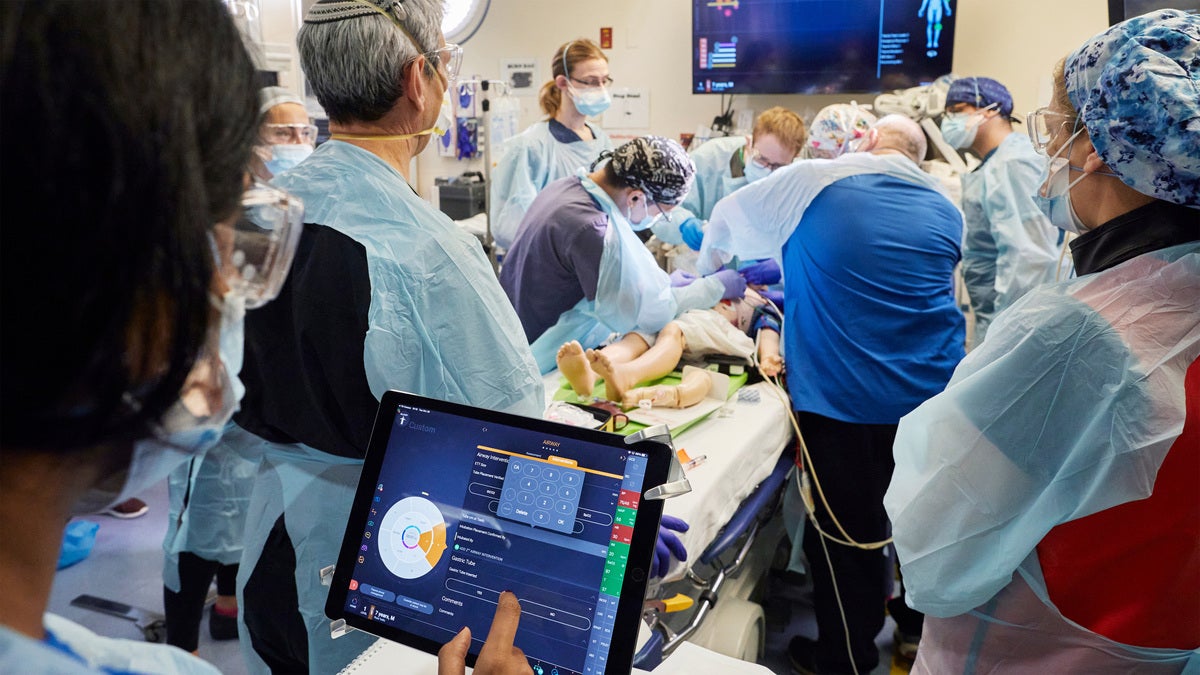[ad_1]
The lack of true multi-tasking has long been a criticism thrown at the iPad, but this may (or may not) be about to change, and we may (or may not) learn more about this at Apple’s Worldwide Developers Conference (WWDC). The big event begins June 6.
Table of Contents
Let’s mingle, let’s mix it up
The evidence for the change is sparse — it consists of additional WebKit code for a multitasking mode that suggests freely-resizable windows. What this might mean in practice is that you’ll be able to open multiple windows on iPad and resize them as you like, closer to the Mac experience.
Developer Steve Troughton-Smith speculates the code could feasibly support new iPad OS-powered devices as well as providing a user experience similar to a Mac desktop.
Apple continues to bring both iPad and Mac user experiences closer together, while continuing to respect the differences between both. That vision extends to complementary use, as evidenced by Universal Control announced in 2021. The latter lets you use a Mac and an iPad together with one mouse and keyboard to control both and improved partnership across the platforms — you can drag-and-drop items between devices, for example. The sum of both devices used together becomes bigger than the parts, while both devices retain their uniqueness.
Now with bigger engines
With Apple Silicon, both devices now have much bigger engines. With this in mind, it is quite interesting that despite Apple’s use of Mac-class M1 Apple Silicon chips across most of the iPad range, little is known of how it plans to exploit that processing power in iPad OS 16. Apple won’t have powered-up the range for no good reason, but speculation has been conspicuously absent in recent weeks.
What we have heard consists of improved notifications and vague noises about “new ways to interact with apps,” and “fresh Apple apps.” What little we also think we know suggests improvements to notifications, health apps, and potentially a platform for future development of the company’s anticipated AR glasses.
Given the speculated code-name for Apple’s next macOS iteration is “Mammoth,” it makes sense to anticipate big news around the company’s platforms. What changes we see for the Mac will be echoed in the iPad, and vice versa. It makes much more sense that Apple has mammoth plans for its productivity devices than that it doesn’t.
The direction of travel
Thinking back a year, Universal Control was probably the most anticipated feature announced at WWDC last year. Apple’s iPad desiderata has also been articulated with Slide Over, Split View, the still multi-window shelf and so on. Even the introduction of the capacity to build apps in Swift Playgrounds shows a direction of travel toward more functionality to fully exploit the capabilities of these machines.
Apple has significantly refined the multitasking experience in iPadOS in recent years, enhancing features such as Slide Over, Split View, and the dock. For example, iPadOS 15 added a new multitasking menu at the top of apps, as well as center window, a new multi-window shelf, and a more intuitive experience with Split View. The latest speculation about resizable windows is by far the biggest claim yet for what’s to come, and hints at another round of multitasking improvements in iPad.
What might this mean for business?
So, what does this suggest for you and your business?
What it means is straightforward. Apple continues its mission to deliver user experiences that feel equally familiar on both iPad and Mac. That doesn’t mean identical experiences — each platform has its own unique qualities — but does encompass everything from identical keyboard shortcuts to pointer and keyboard support. This attempt also means that iPads are becoming capable computer replacements for a growing number of tasks.
One of the best barometers for this growing functionality is in Photoshop for iPad. That application appears to be in accelerated development and just weeks ago Adobe added two incredibly powerful tools to the iPad app — content aware fill and remove background.
As iPad functionality continues to improve, the product family becomes an increasingly viable alternative platform. That’s important because the innate mobility of the iPad also gives Apple a chance to develop completely new solutions built around the inherent technology it now owns. Think kiosks, wearables, e-paper devices, smart entertainment systems and so on.
In the shorter term, any improvements Apple does make to iPad OS will have an immediate impact on mobile professionals who now use the tablet instead of a notebook when on the go. Improvements in multi-tasking simply make the devices more capable, while improvements in functionality and the class of apps they support will do the same.
[Also read: We already know how Apple will prosper in uncertainty]
Pitching for the upgrade business
It’s also important to note — particularly as millions of Windows PCs hit EOL — iPads already provide viable, robust, and more secure alternatives for numerous tasks at relatively low TCO. Any improvements in capability and functionality can’t hurt the platform.
That Apple must continue to put momentum behind the iPad range is clear. While shipments climbed to peak of 17.5 million in Q4 21, component-related logistical problems slashed sales to 12.1 million in Q1 22. While Apple retains leadership in the tablet market, it will want to consolidate and progress that market; multitasking improvements should help it achieve that. That its tablets now boast high-end Mac processors makes this an obvious aim. That so little is known concerning Apple’s plans for iPad OS 16 (along with little insight into iOS 16), means all eyes (virtual and otherwise) will be on Apple’s WWDC announcements June 6, Swiftly approaching.
Please follow me on Twitter, or join me in the AppleHolic’s bar & grill and Apple Discussions groups on MeWe.
Copyright © 2022 IDG Communications, Inc.
[ad_2]

Leave a Reply